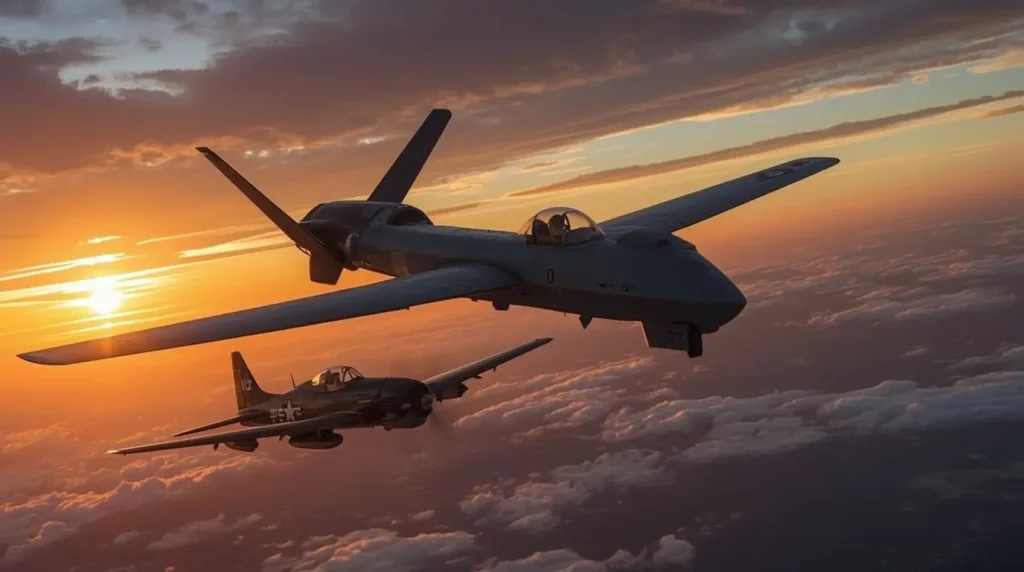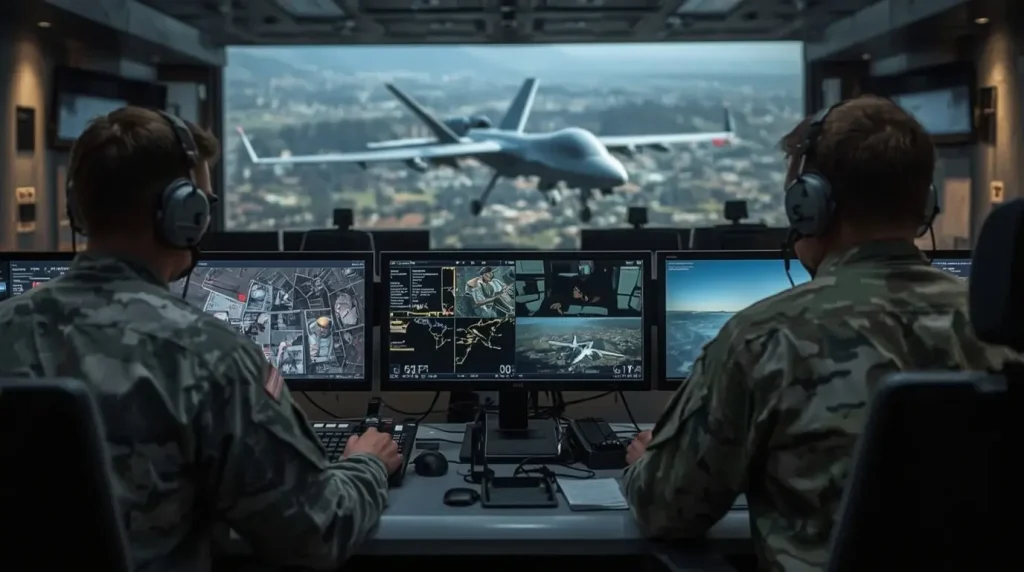An important ceremony was held on September 29, 2025, for the first permanent deployment of reconnaissance MQ-9 Reaper drones to the Kunsan Air Base, System, Republic of Korea. Before this, the drones were involved in joint and rotational deployments. According to 7th Air Force spokeswoman Hayden Maj. Laura, this shows the ‘iron clad commitment ‘of the deployment of drones for the Defense of So Korea.
The MQ-9 Reaper is unmatched in terms of modern warfare
The Reaper drone system is the most advanced in the world. It has the capability of serving the System and its Republic neighbors by conducting surveillance and deterrence over an area of the Korean Peninsula. The drone has an operational range of 1850 km (715 miles) from the Kunsan Air base and thus, the entire Korean Peninsula and most of the surrounding region is in its range.
The MQ-9 Reaper is one of the most effective UAVs for Intelligence, Surveillance, and Reconnaissance (ISR) missions and, when paired with the ability to fly for over 24 hours and reach 50,000 feet, unparalleled endurance. The Reaper has the ability to observe developing situations for extended periods of time and far beyond the capabilities of manned flight.

The Reaper is flown by a two person crew, a pilot and a sensor operator, both who work remotely. The Reaper is equipped with advanced military sensors and real-time battlefield technologies to provide commanders with battlefield awareness. In addition, the Reaper is equipped with advanced sensors that serve to identify and tag military targets, serving as a target designator, and as a strike aircraft when fitted with air-to-surface missiles and laser-guided bombs.
The MQ-9 is a versatile and powerful drone that enhances the capability to monitor the military activities of North Korea. As in the words of Lt. Douglas Slater, the commander of the newly reactivated 431st Squadron: ‘The MQ-9 provides powerful capabilities to the area. We’re here to support the mission, deepen cooperation, and demonstrate our collective will to maintain security and stability across the Indo-Pacific region.’
Strategic Implications: Enhancing the Deterrence Posture
Having Reaper drones stationed on a permanent basis in South Korea improves the allies’ ability to monitor North Korea’s military activities, particularly the the countless missile tests and rampant weapons manufacturing. Reaper’s powerful surveillance capabilities provide persistent overhead surveillance which can detect and track possible provocations almost in real-time.
The focus of this deployment is during an especially sensitive period of heightening tensions in the region. North Korea is advancing its weapons programs while simultaneously abandoning long standing attempts to secure peace on the Korean Peninsula. As a result, the integrated deterrence posture of the US South Korea alliance stands to benefit greatly from the Reaper’s sophisticated surveillance capabilities.
The Reaper deployment is just one slice of a larger effort within the United States to reinforce its presence in Korea. The United States just recently began the transfer of 31 F 16 Fighter jets from Kunsan to Osan Air Base, which is situated closer to the Demilitarized Zone. in a bid to form what military officials refer to as a “super squadron” consisting of an abnormally large number of fighters. Together, all of these factors provide a layer of armor for the region that invites stronger layered defenses.

Training and operational history on the Peninsula
Despite the fact that the permanent basing of the MQ-9 Reaper to South Korea is a new phenomenon, the aircraft is intimately acquainted with the Korean Peninsula. Over the past months, the versatile Reaper platform has participated in multiple large-scale military exercises in South Korea, allowing ‘soaking’ of the operational environment and reinforcing interoperability with allied South Korean forces.
During the 12-day Freedom Flag aerial exercise that began on 21 April 2025, the MQ-9 Reaper participated in training scenarios of air interdiction, defensive counter-air, and combat search and rescue. These activities confirmed the multiple roles the Reaper can perform, even in enhancing the primary mission of intelligence gathering.
More interesting is the fact that six months before the activation of the squadron, a Reaper drone was able to demonstrate her weapons capability by dropping an inert Joint Direct Attack Munition (JDAM) on Jikdo Island of South Korea in the Yellow Sea region, during training. This exercise, which was held in the Korean Peninsula, established the Reaper’s effectiveness in the delicate and complex geographical and weather conditions unique to this region.
The delivery of the Reaper system to Korea this summer was a milestone in bilateral defense cooperation. July’s deployment to Gwangju Air Base of the California Air National Guard’s 163d Attack Wing marked a historic first in which an American drone unit conducted extended operations with the South Korean Air Force.
Regional Dynamics and Korea’s Drone Capabilities
Close to 28,500 U.S. troops are still stationed in South Korea under the 1953 mutual defense treaty signed after the Korean War. This is in addition to the U.S. strategic assets that roam the region, which now includes the Reaper squadron, under the RO Korea. South Korea, for example, operates an extensive fleet of high-altitude drones and is quite unique in the region. Rather than the RQ-9 Reaper, Korea maintains four RQ-4B Global Hawks for its operations. The concurrent use of these different systems provides a dense and seamless surveillance umbrella.
The South Korean military finally opened a Drone Operations Command following the incident where five North Korean drones entered South Korean air space. South Korea’s military was utterly blind to the incursion and did not manage to intercept any of the drones. These events prompted Yoon Suk Yeol to pledge to improve South Korea’s anti-drone military equipment.
The Future in Pacific Strategy
The reactivation of the 431st with the Reaper drones is a momentous occasion. It is equipment of warfare. It signifies the continued evolution of the U.S.-South Korea military partnership. In the Pacific, the U.S.-South Korea alliance is critical to peace. The Reaper, with its advanced surveillance, reconnaissance, and military capabilities, will provide the needed stability in the region.
The integration of Reaper assets to South Korea is part of the broader strategy of the U.S. to incorporate unmanned systems in its military strategy in the Pacific. The Reaper’s advanced sensors are invaluable in the vast Indo-Pacific region. It is the Indo-Pacific region where advanced threats are most likely to arise.
The exact number of Reaper aircraft and prior assigned personnel to the new squadron have also not been revealed, but the Air Force has chosen not to disclose this information due to security reasons. Operational basing, however, aircraft operational basing is which is clear, the basing of Reaper provides commanders a multi-role persistent platform that can rapidly respond to crises and provocations.
Conclusion: A New Chapter in Defense Cooperation
For decades now, the dynamic U.S-South Korea defense collaboration is still growing, and the reassignment of the Reaper to South Korea is now a specially distinguished feature. The new partnership is most beneficial towards the heightened regional collapse, and so the new any-time Reaper is most welcome. The reactivated squadron also unmaps the legacy of the WWII aviators, and so this partnership embraces the future with the unmanned aviation.
Source: https://edition.cnn.com/2025/09/30/asia/us-air-force-reaper-drones-south-korea-intl-hnk-ml
For more incredible stories of everyday news, return to our homepage.